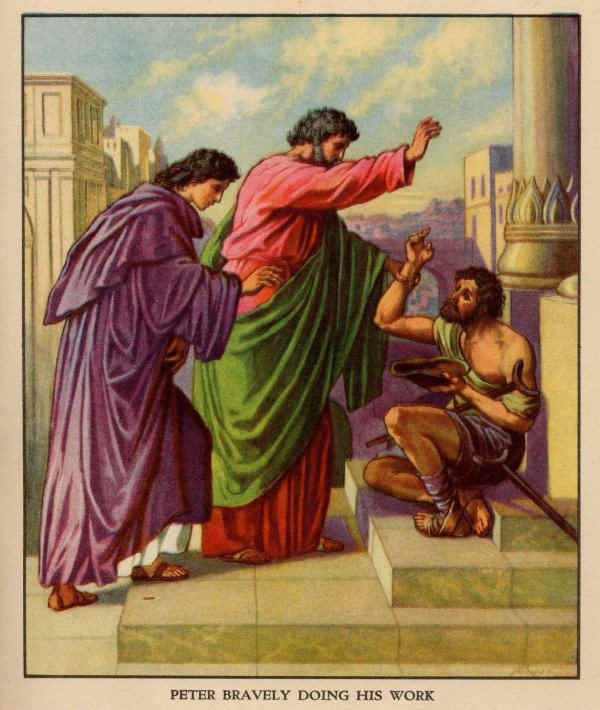+ Blue Letter Bible/KJV + 개역한글 성경구절
글 수 22
2024.6.16 12:11:08

▶ 갈대아 언어 Chaldean Language.
At Babylon Daniel and his companions had to acquire 'the learning and the tongue of the Chaldeans,' that is, their ancient literature and language. Dan. 1:4. The question is what was that language? In Dan. 2:4 we find that the wise men answered the king in the Syriac language, that is Aramaic: cf. Ezra 4:7. The Hebrew language is held to be closely related to the Aramaic: that the two are not the same is evident from Isa. 36:11, where the Jewish leaders asked Rabshakeh to speak in the Syrian language, and not in the Jews' language, that the Jews generally should not understand what was said. There must be some reason why in Daniel it is said the wise men answered the king in 'Aramaic:' this is held to be not the learned and court language, but the common language of the people; and the wise men may have used it that all who heard it might judge of the reasonableness of what they said, though the king might condemn them. The language spoken at court would be different and has been judged by some to be a branch of the Aryan dialect, the ancient language of Central Asia; or perhaps it may have been the ancient Accadian.
(단01:4 곧 흠이 없고 아름다우며 모든 재주를 통달하며 지식이 구비하며 학문에 익숙하여 왕궁에 모실만한 소년을 데려오게 하였고 그들에게 갈대아 사람의 학문과 방언을 가르치게 하였고
(단02:4 갈대아 술사들이 아람 방언(Syriack)으로 왕에게 말하되 왕이여 만세수를 하옵소서 왕은 그 꿈을 종들에게 이르시면 우리가 해석하여 드리겠나이다
(스04:7 아닥사스다 때에 비슬람과 미드르닷과 다브엘과 그 동료들이 바사 왕 아닥사스다에게 글을 올렸으니 그 글은 아람 문자와 아람 방언(Syrian tongue)으로 써서 진술하였더라
(사36:11 이에 엘리아김과 셉나와 요아가 랍사게에게 이르되 우리가 아람 방언(the Syrian language)을 아오니 청컨대 그 방언으로 당신의 종들에게 말씀하고 성위에 있는 백성의 듣는데서 유다 방언으로 말하지 마소서
As to the writing, the inscriptions found at Assyria, Babylon, and Persia are cut in stone or stamped on bricks in the cuneiform (that is, wedge-shaped) characters. It is known that there was an earlier mode of writing by hieroglyphics which could easily be painted upon papyrus, but which could not without great labour be cut in hard stone, and it is probable that this led to the adoption of the wedge-shaped characters, in which there are no curves: by the variation in position, and number of short and long wedges every sound could be represented, and every proper name spelled. Darius is thus represented on a Persian inscription at Behistun.
--- Morrish Bible Dictionary
개역한글KHRV( 120일1독, 1년1독, 권별, 성경통독 )
STUDY - 구절(WESLEY), 단락(MATTHEW), 읽기(Wayne),
Dictionary - Chapter, OT구약, NT신약, 테마별,
(*.127.135.148)
|
.
성경연대표
1.창조
2.족장
3.출애굽
4.광야
5.정복
6.사사
7.통일왕국
8.분열왕국
9.포로
10.포로귀환
11.중간
12.예수
13.초대교회
14.세계선교
관련그림.지도 1.창조
2.족장
3.출애굽
4.광야
5.정복
6.사사
7.통일왕국
8.분열왕국
9.포로
10.포로귀환
11.중간
12.예수
13.초대교회 Ani
1창세기[Genesis] 2출애굽기[Exodus] 3레위기[Leviticus] 4민수기[Numbers] 5신명기[Deuteronomy] 6여호수아[Joshua] 7사사기[Judges] 8룻기[Ruth] 9사무엘상[I Samuel] 10사무엘하[II Samuel] 11열왕기상[I Kings] 12열왕기하[II Kings] 13역대상[I Chronicles] 14역대하[II Chronicles] 15에스라[Ezra] 16느헤미아[Nehemiah] 17에스더[Esther] 18욥기[Job] 19시편[Psalms] 20잠언[Proverbs] 21전도서[Ecclesiastes] 22아가[Song of Solomon] 23이사야[Isaiah] 24예레미야[Jeremiah] 5예레미아애가[Lamentations] 26에스겔[Ezekiel] 27다니엘[Daniel] 28호세아[Hosea] 29요엘[Joel] 30아모스[Amos] 31오바댜[Obadiah] 32요나[Jonah] 33미가[Micah] 34나훔[Nahum] 35하박국[Habakkuk] 36스바냐[Zephaniah] 37학개[Haggai] 38스가랴[Zechariah] 39말라기[Malachi] 40마태복음[Matthew] 41마가복음[Mark] 42누가복음[Luke] 43요한복음[John] 44사도행전[Acts] 45로마서[Romans] 46고린도전서[I Corinthians] 47고린도후서[II Corinthians] 48갈라디아서[Galatians] 49에베소서[Ephesians] 50빌립보서[Philippians] 51골로새서[Colossians] 52데살로니가전서[I Thessalonian] 53데살로니가후서[2 Thessalonian] 54디모데전서[I Timothy] 55디모데후서[II Timothy] 56디도서[Titus] 57빌레몬서[Philemon] 58히브리서[Hebrews] 59야고보서[James] 60베드로전서[I Peter] 61베드로후서[II Peter] 62요한일서[I John] 63요한이서[II John] 64요한삼서[III John] 65유다서[Jude] 66요한계시록[Revelation]

 , 성경권별
, 성경권별 

